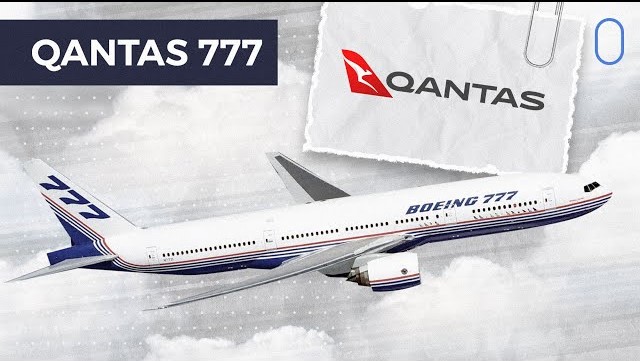When talking about major international airlines and iconic aircraft, Qantas and the Boeing 777 seem like a natural fit. The 777 has been a cornerstone for many long-haul carriers worldwide since its introduction in the 1990s, offering impressive range, capacity, and reliability. Yet, despite its global success, Australia’s flag carrier Qantas never added the Boeing 777 to its fleet. This has long intrigued aviation enthusiasts and industry analysts alike. So, why did Qantas pass on one of the most popular widebody aircraft ever built?
A Brief Overview of the Boeing 777
Before diving into Qantas’s reasoning, it’s worth understanding what makes the Boeing 777 so appealing. Launched in 1995, the 777 was Boeing’s first fly-by-wire aircraft and was designed to bridge the gap between the smaller 767 and the larger 747. It quickly became a favorite among airlines for its fuel efficiency, long range, and high passenger capacity. Variants like the 777-200LR and 777-300ER extended its reach even further, making ultra-long-haul routes feasible and profitable.
Many major carriers, including Emirates, Singapore Airlines, British Airways, and American Airlines, embraced the 777 for both its cargo and passenger capabilities. Given Qantas’s global route network, especially across the Pacific and into Europe, it might seem surprising that they never placed a single order.
Timing and Fleet Strategy
The biggest reason behind Qantas’s decision lies in timing. When Boeing launched the 777 in the early 1990s, Qantas had already made significant investments in its long-haul fleet, particularly in the Boeing 747. At the time, the 747-400 was Qantas’s flagship aircraft. It had the range to cover long distances like Sydney to Los Angeles and the passenger capacity needed to serve high-demand routes.
Additionally, the Airbus A330 became an attractive option for medium- to long-haul routes. In the early 2000s, Qantas started acquiring A330s for routes that didn’t require the full capacity of a 747. These aircraft were more efficient for regional and trans-Tasman flights, and they filled a different niche than the 777.
When Boeing introduced the 777-300ER, which would have been the most suitable variant for Qantas, the airline had already committed to Airbus’s new long-haul option—the A380. The superjumbo offered even more capacity than the 777, and Qantas viewed it as a way to reduce per-seat costs on high-density routes.
The Airbus A350 Factor
In recent years, Qantas has further committed to Airbus with its order of the A350-1000, chosen for its “Project Sunrise” ultra-long-haul flights. These aircraft are intended to connect Australia non-stop to destinations like London and New York. The A350’s modern design, superior fuel efficiency, and passenger comfort made it more appealing than the aging 777 platform, especially when considering future growth and sustainability targets.
Fleet Simplification and Maintenance
Another practical reason Qantas likely avoided the 777 is fleet simplification. Airlines strive to minimize the variety of aircraft in their fleets to reduce training, maintenance, and operational complexity. Qantas has historically aligned its widebody fleet with either Airbus or Boeing platforms but not mixed variants unnecessarily. Adding a relatively small number of 777s to its already diverse fleet wouldn’t have been cost-effective.
Conclusion
While the Boeing 777 has been a massive success globally, Qantas’s decision not to order the aircraft boils down to timing, strategic planning, and long-term fleet goals. They weren’t ignoring the 777—they simply didn’t need it. Their existing aircraft at the time fulfilled operational requirements, and future aircraft like the A380 and A350 better suited their evolving needs.
For aviation fans, it’s an intriguing “what if” scenario, but for Qantas, it was simply good business.



